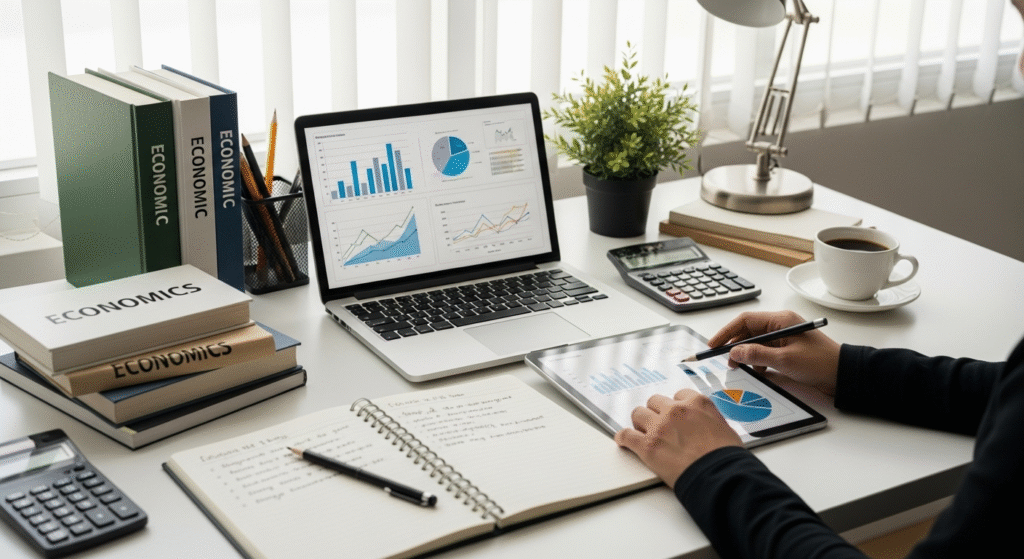
Economics isn’t just a subject for students or professionals—it’s something that touches every part of our daily lives. From the moment you decide whether to cook at home or order takeout, to how you save for the future or choose a new job, economics is quietly shaping your decisions. It explains why prices rise, why resources feel limited, and how money choices affect both individuals and communities.
By understanding even the basics, you gain more control over your financial well-being and everyday planning. In this guide, you’ll learn the 5 basics of economics in a simple, relatable way that makes sense for real life.
Scarcity and Choice
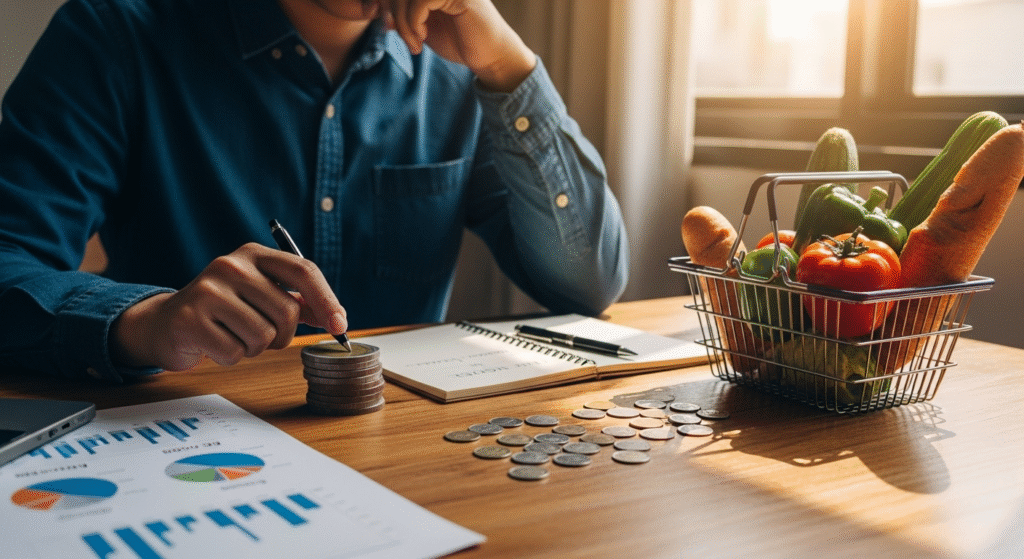
Economics begins with one of its most important ideas: scarcity. Scarcity means that resources are limited while human wants are unlimited. Every person, business, and government must deal with the fact that money, time, and materials are never enough to satisfy all needs. This simple idea forms the foundation of economics because it explains why choices are necessary. When something is scarce, we must decide how to use it wisely, and those choices create consequences.
A real-life example of scarcity can be seen in everyday living. Imagine you just received your paycheck. You need to pay rent, buy groceries, and maybe save for the future. At the same time, you want to spend on fun activities like going to the movies or planning a vacation. Because your income is limited, you cannot do everything at once. You must make choices, such as paying rent before booking a vacation. This is economics at work—it shows how scarcity pushes people to prioritize one need over another.
Businesses also deal with scarcity. A clothing company may only have enough fabric to make a certain number of dresses or shirts. If the demand is high, they must decide whether to produce more of one style or create a new design. Their choice will affect profit, customer satisfaction, and long-term success. Governments face the same issue on a larger scale. For example, a country may have to choose between spending more on building schools or improving healthcare. Since resources like money, land, and labor are limited, these choices are shaped by economics.
The positive side of scarcity is that it encourages innovation. When people cannot have everything they want, they often think creatively to find new solutions. For example, farmers with limited water supplies may develop better irrigation systems. Businesses with limited budgets might create smarter marketing strategies. Scarcity pushes individuals and organizations to be resourceful.
The negative side is that scarcity can create inequality. Some people may not have enough money for basic needs like food or shelter. This shows the harsh reality that while scarcity exists for everyone, its effects are not equal. In economics, this gap explains why policies and systems are created to help balance opportunities.
Supply and Demand

In economics, supply and demand explain how prices are set and why markets change. Supply means how much of a product or service is available, while demand means how much people want it. The relationship between these two forces shapes the cost, availability, and value of goods in everyday life.
A simple example of supply and demand is seen in gas prices. When fuel supply is high and demand is steady, prices usually drop. But if demand rises quickly—such as during holiday travel—while supply stays the same, prices go up. This is economics in action: demand pulls prices upward when goods are limited, and supply pushes prices downward when products are abundant.
Another example can be found in technology. When a new iPhone launches, demand is very high, but supply is limited. This creates a situation where prices remain high because people are willing to pay more. Over time, as supply increases and demand balances out, prices may drop. In economics, this cycle of supply and demand affects nearly every product and service we use.
For businesses, understanding supply and demand is critical. If a company produces too much of a product with little demand, it will lose money. If it produces too little of a product in high demand, it may miss the chance to earn more profit. Governments also monitor supply and demand when planning trade policies or regulating industries. For example, they may release food reserves when demand spikes to prevent shortages.
The positive side of supply and demand is that it promotes fairness and efficiency. Prices naturally adjust based on how much people want something and how much is available. This allows markets to balance themselves over time. The negative side, however, is that demand can sometimes make essentials too expensive for average consumers. For example, if housing demand in a city is much higher than supply, rent prices may become unaffordable.
Opportunity Cost
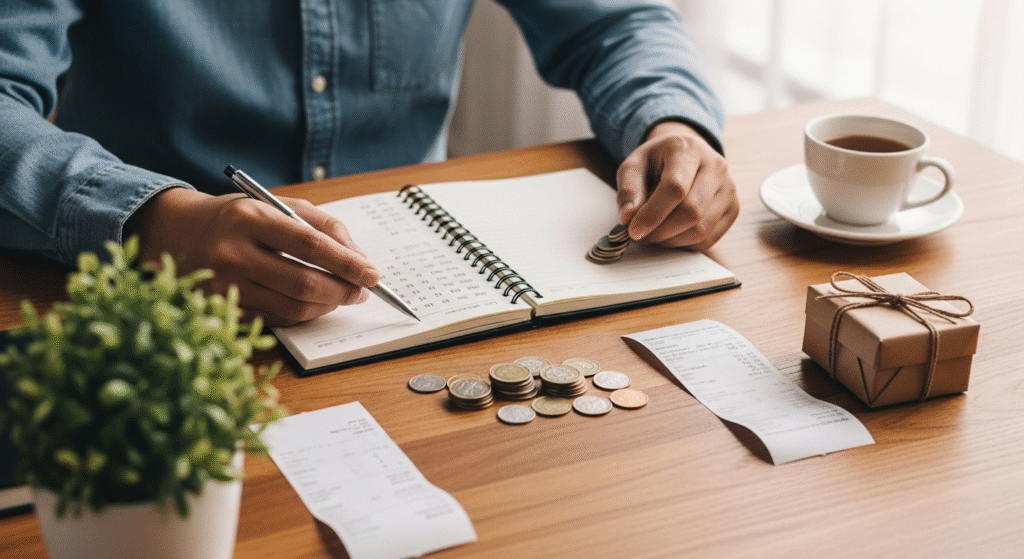
Economics also teaches us about opportunity cost. This concept explains that every decision has a trade-off. Opportunity cost is what you give up when you choose one option over another. Since resources like money and time are limited, every choice means losing the chance to do something else.
A simple example is choosing between buying coffee every morning or saving that money. If you buy the coffee, the opportunity cost is the money you could have saved. If you save the money, the opportunity cost is missing out on the enjoyment of your daily coffee. Economics shows that opportunity cost exists in both small daily choices and big life decisions.
For students, opportunity cost might mean studying instead of going out with friends. The cost of choosing to study is the missed social time. For workers, choosing to work overtime may bring more income, but the opportunity cost is spending less time with family. Businesses face the same challenge. If a company invests money in developing a new product, the opportunity cost might be not improving an existing product.
The positive side of opportunity cost is that it makes people think carefully before making decisions. Economics uses this principle to encourage weighing all options. For example, when choosing between two jobs, considering opportunity cost helps compare salary, location, and growth potential. On the negative side, opportunity cost can create stress. People sometimes feel regret about what they missed out on, leading to indecision or dissatisfaction.
Governments also use opportunity cost when making policies. If they spend more money on building roads, the opportunity cost might be less funding for healthcare or education. Economics highlights that no decision is free. Every choice comes with a sacrifice.
Inflation and Purchasing Power
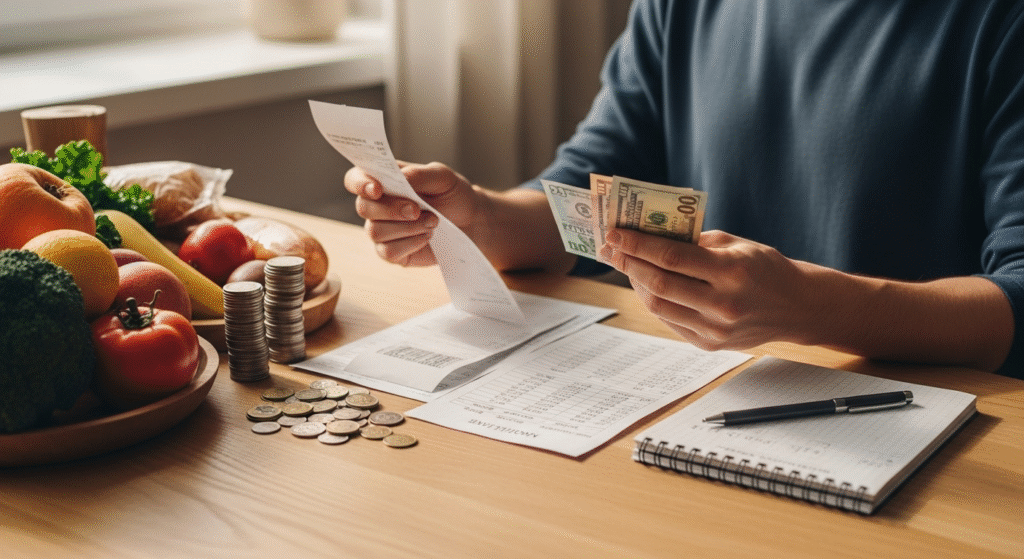
Inflation is one of the most important concepts in economics, and it affects every person in daily life. In simple terms, inflation means that the prices of goods and services rise over time. As prices go up, the value of money decreases, which means you can buy fewer things with the same amount of money. This is why people often say that money does not go as far as it used to. For example, if you had $10 ten years ago, you could probably buy a lot more food or clothes than you can buy today. Inflation shows how the power of money changes, and this is what economists call “purchasing power.” Purchasing power is simply the amount of goods and services that money can buy. As inflation rises, purchasing power falls.
In economics, inflation can be caused by many reasons. One main reason is demand-pull inflation, which happens when more people want to buy goods than the economy can produce. Another type is cost-push inflation, which happens when the cost of making goods goes up, and companies raise prices to cover those costs. Governments and central banks also play a role in controlling inflation by changing interest rates or money supply. When inflation is very high, it hurts the economy because salaries and savings lose value. Imagine working hard and saving $1,000, only to realize that in a few years it can buy much less than before. This is why people worry about inflation and why it matters so much in economics.
Inflation also affects investments. If you keep all your money in a savings account with little or no interest, inflation will slowly reduce its value. This is why many people choose to invest in assets like real estate, stocks, or bonds, which often grow faster than inflation. In economics, this is called protecting wealth against inflation. Salaries are also connected to inflation. Workers expect their wages to rise with prices, so they do not lose purchasing power. If wages do not keep up, families struggle to buy the same goods they once could. This shows how inflation connects savings, investments, and salaries all together.
Role of Government in Economics
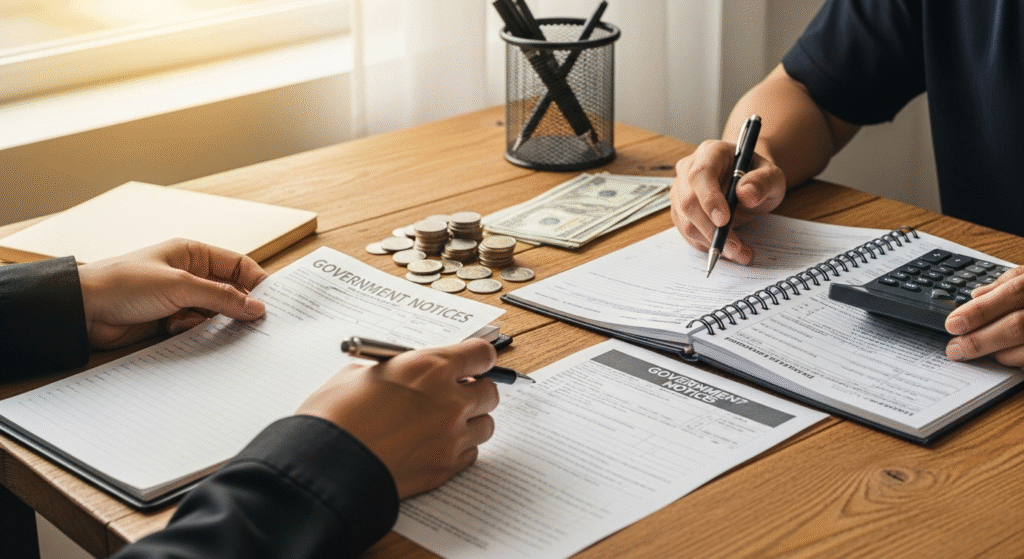
The role of government in economics is big and powerful because governments shape the way economies work. Governments collect taxes, spend money, and create policies that affect businesses and individuals. Every decision a government makes with money is connected to economics. For example, when the government increases spending on healthcare, education, or roads, it puts more money into the economy and creates jobs. On the other hand, when taxes are raised, people have less money to spend, which can slow down the economy. Understanding how governments influence economics helps citizens see why certain policies matter to their daily lives.
One clear example of the government’s role in economics is stimulus checks. When economies slow down, such as during a recession, governments may send money directly to citizens. This gives people more spending power, which increases demand and helps businesses grow. Another example is the minimum wage. By setting a wage floor, the government ensures that workers are paid fairly, but it can also affect how many jobs companies can offer. Subsidies are another tool in economics. For instance, governments may provide financial help to farmers, energy companies, or small businesses to lower costs and keep prices affordable. Each of these actions shows how economics and government policies are connected in everyday life.
In economics, government decisions can make the difference between growth and struggle. If taxes are too high, businesses may not invest or expand. If spending is too low, people may not have enough services, jobs, or opportunities. This is why balancing taxes, spending, and policies is so important in economics. People often debate whether governments should play a big or small role in the economy. Some believe governments should only set basic rules, while others think governments should be more active in helping people and businesses succeed. No matter the opinion, it is clear that the government always plays some role in shaping economics.
For ordinary citizens, understanding the government’s role in economics helps them make informed choices. Knowing how taxes work helps families plan their budgets. Understanding subsidies explains why certain goods, like food or gas, may cost less. Learning about minimum wage policies can help workers see how their salaries are shaped. Economics is not just a subject in books. It is alive in every government policy we see. When a government makes decisions about spending, taxes, or rules, it is changing economics in real time. Citizens who understand these connections are more prepared to handle changes and make smart financial decisions.
Conclusion
Economics may seem like a complex subject, but the five basics we discussed make it easier to understand. Supply and demand, opportunity cost, markets, inflation, and government roles are at the heart of how economies work. These basics explain why prices rise, why we make trade-offs, why money changes value, and how governments shape the economy. The key lesson is that economics is not only for experts. It is something every person experiences daily. From buying groceries to paying taxes, economics is always part of the picture.
The best way to learn economics is to start noticing it in your everyday choices. Pay attention to how prices change, why governments create policies, and how your money grows or loses value over time. By understanding these basics, you can make smarter financial decisions and be more aware of the world around you. Economics is not just theory. It is the story of daily life, and you are part of it.
FAQs
What is economics in simple words?
Economics is the study of how people, businesses, and governments use limited resources to meet their needs and wants. It looks at money, jobs, goods, and services to understand how everything connects. For example, when you decide to spend money on food instead of clothes, that choice is part of economics. Governments also make choices about spending, taxes, and policies, which affect the whole economy. In simple words, economics explains how decisions are made every day about money and resources.
Why does inflation happen?
Inflation happens when the prices of goods and services go up over time. In economics, this can be caused by higher demand, higher production costs, or changes in money supply. For example, if many people want to buy the same product but there aren’t enough available, the price usually rises. Inflation also happens when the cost of materials or wages increases, and businesses pass that cost to consumers. This is why $10 today buys less than it did years ago, making inflation an important part of economics.
How do savings and investments connect to economics?
Savings and investments are important parts of economics because they affect both individuals and the overall economy. When you save money in a bank, you are preparing for future needs, but inflation can reduce the value of those savings. Investing in assets like stocks, real estate, or bonds can help money grow faster than inflation. In economics, these choices are linked to risk and reward, showing how people manage resources. This is why learning about savings and investments is key to protecting financial health.
What are some examples of economics in everyday life?
Economics shows up in simple daily activities. Buying groceries, paying rent, or filling your car with gas all involve prices, supply, and demand. Deciding whether to work overtime or spend time with family reflects opportunity cost, which is a core idea in economics. Even when governments build schools, raise taxes, or provide healthcare, they are practicing economics. By noticing these patterns, you can see that economics is not just theory—it’s everywhere in daily life.
Why do governments give subsidies in economics?
Subsidies are financial support from governments to businesses or industries. In economics, subsidies lower costs so goods or services can be more affordable for people. For example, farming subsidies keep food prices lower, while renewable energy subsidies encourage cleaner power. This helps balance markets and support industries that benefit society. Citizens should understand subsidies because they affect both taxes and prices.
Is economics the same as finance?
Economics and finance are related but not the same. Economics studies how resources, money, and markets work in society, while finance focuses more on managing money, investments, and banking. For example, economics looks at inflation and unemployment, while finance deals with personal savings or company profits. Both are important for understanding money, but economics gives a bigger picture. This difference helps people see how personal money choices connect to larger systems.
